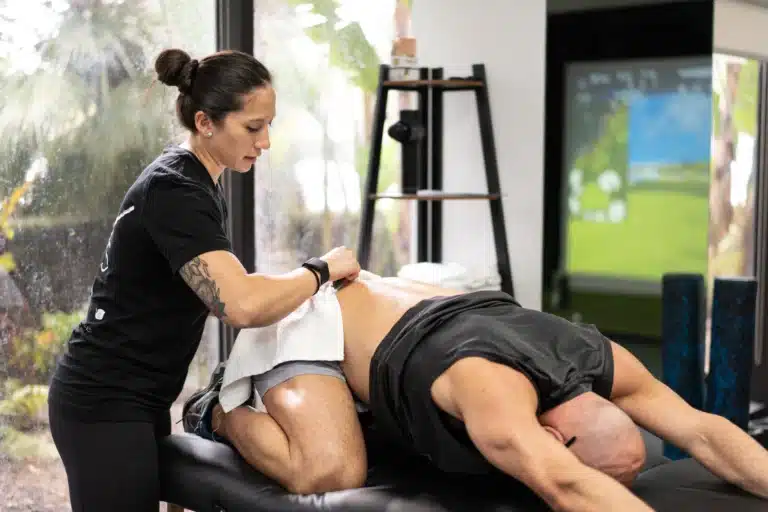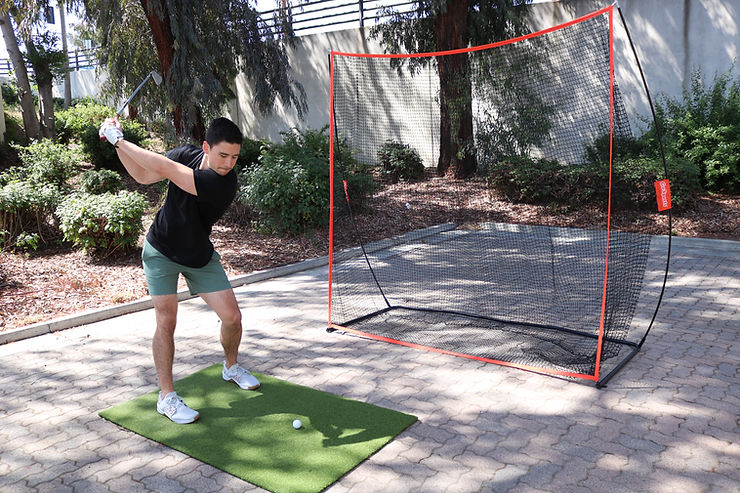Frozen shoulder, medically known as adhesive capsulitis, is characterized by pain, stiffness, and a limited range of motion in the shoulder joint. It typically affects individuals over 40 and is more common among women. Statistics indicate that 5% to 20% of the population will experience an episode of frozen shoulder, making it a significant concern for those at risk. This condition can interfere with daily activities, making it challenging to perform basic tasks.
Exercise is critical in managing frozen shoulder symptoms and gradually restoring shoulder mobility. Specific exercises can help break up adhesions in the shoulder capsule, improve flexibility, and reduce pain. In this guide, we’ll explore some of the best exercises for a frozen shoulder, helping you regain strength and range of motion.
What is a Frozen Shoulder?
A frozen shoulder is when the shoulder joint becomes inflamed and thickened, leading to stiffness and pain. Over time, the joint capsule thickens, limiting movement and causing pain even at rest. The condition progresses through three stages: the Freezing Stage, where individuals experience increased pain and a gradual loss of motion; the Frozen Stage, characterized by reduced pain but persistent stiffness that significantly limits movement; and the Thawing Stage, which involves a gradual improvement in range of motion and a decrease in stiffness. Understanding these stages is essential, as it allows for exercises and treatments to be tailored to the specific needs of each phase.
Benefits of Exercise for Frozen Shoulder
Exercises designed for frozen shoulders provide numerous benefits. They:
- Improve shoulder flexibility and range of motion, mainly when guided by physical therapy exercises for frozen shoulder
- Reduce stiffness by stretching the shoulder capsule
- Alleviate pain and discomfort
- Restore function, enabling you to perform daily activities with greater ease
Research shows that exercise is effective in improving range of motion, function, and pain in patients with frozen shoulders. These exercises can significantly improve mobility and pain levels when performed consistently and correctly.
Precautions Before Starting Exercises
Before beginning any exercise program for a frozen shoulder, consider these precautions:
- Warm-up: A gentle warm-up helps prepare the shoulder muscles and ligaments for exercise.
- Go slow: Avoid pushing too hard, especially if you feel pain. Listen to your body and work within your comfort range.
- Stay consistent: Regular, gentle exercises are more effective than aggressive or irregular sessions.
- Consult a professional: Consult a healthcare provider or physical therapy Torrance specialist, especially if your shoulder pain worsens or you’re unsure how to start.
10 Exercises for Frozen Shoulder You Can Try

These exercises focus on gradually improving your shoulder’s flexibility, strength, and mobility. Many shoulder exercises for instability can be helpful as well. Best exercise for frozen shoulder options involve using a wand, towel, or your own arm, allowing for incremental progress in your shoulder’s range of motion.
Wand Exercise with Flexion
Hold a wand or broomstick with both hands to stretch your shoulders effectively, ensuring your arms are extended straight in front of you. Gradually raise the wand overhead while keeping your arms straight, allowing for a gentle shoulder stretch. Hold this position for about 10 seconds before lowering your arms back to the starting position. This exercise can be repeated 5 to 10 times to enhance flexibility and relieve tension in the shoulder area.
Wand Exercise with Extension
Stand with the wand behind your back to perform this exercise, gripping it securely with both hands. Gradually lift the wand backward, which helps open up your shoulders and improve flexibility. Maintain this position for 10 seconds to feel the stretch, then carefully release it. Aim to repeat this sequence 5 to 10 times to enhance your shoulder mobility and overall posture.
Wand Exercise with External Rotation
To perform this exercise, sit or stand with your arms at a 90-degree angle, holding the wand across your waist. Slowly and gently move your hands outward while rotating your shoulders outward, ensuring you do not strain. Maintain this position for 10 seconds before returning to the starting position. Aim to repeat this movement 5 to 10 times for an effective workout.
Wand Exercise with Internal Rotation
To perform the exercise, stand with the wand in front of you, held at waist level with both hands. Slowly move one hand toward the opposite side, ensuring you rotate your shoulder internally during the motion. Hold this position for 10 seconds, then return to the starting point. Aim to repeat this sequence 5 to 10 times to effectively engage your shoulder muscles and enhance flexibility.
Wand Exercise with Shoulder Abduction and Adduction
Hold the wand in both hands to perform the exercise and ensure it is parallel to the floor. Gradually raise the wand to the side, bringing it to shoulder level in a controlled manner. After reaching shoulder height, lower the wand back to the starting position and repeat this movement 5 to 10 times for an effective workout.
Scapular Active Range of Motion
Stand with your arms at your sides to engage the muscles around your shoulder blade. Gradually lift your shoulders upwards, squeeze your shoulder blades together, and lower them back down. This movement should be repeated 10 to 15 times, focusing on the contraction and relaxation to promote better muscle activation in that area.
Biceps Stretch
Stand facing a wall and extend one arm straight out to your side to perform a simple stretch for your biceps and shoulders. Slowly turn your body away from the wall until you feel a comfortable stretch in your biceps and shoulder. Hold this position for 15 to 20 seconds to allow the muscles to elongate, then relax. Repeat this stretch three times on each side to enhance flexibility and relieve tension for optimal results.
Pectoralis Stretch
Stand in a doorway and place your forearm against the doorframe with your elbow bent at a 90-degree angle to perform a chest and shoulder stretch. Step forward until you feel a good stretch in your chest and shoulder area. Hold this position for 15 to 20 seconds, then relax your arm. Repeat the stretch three times on each side to ensure a thorough stretch and release of tension in the muscles.
Pendulum Stretch
To perform a gentle stretching exercise, lean forward while supporting yourself with one hand on a table or chair. Allow your other arm to hang down and softly swing it in small circles, rotating clockwise and counterclockwise. Engage in this motion for about 1 to 2 minutes, concentrating on maintaining a gentle movement that avoids discomfort or pain.
Towel Stretch
Hold a towel behind your back with your hand gripping each end to perform the shoulder stretch. Gently pull upward with the hand on top, which should help you feel a nice stretch in your shoulder. Maintain this position for about 10 to 15 seconds, then relax. It’s a good idea to repeat this sequence five times to relieve tension and improve flexibility in the shoulder area effectively.
Tips for Effective Frozen Shoulder Exercises

Improving your physical well-being requires a mindful approach and dedication to practice. Focusing on essential principles can enhance your progress and overall experience.
- Patience is key: Progress will be slow but consistent with regular practice.
- Focus on form: Avoid straining or forcing movements.
- Breathe deeply: Deep breathing can help relax the muscles and reduce tension.
- Incorporate daily stretching: A few minutes daily can improve flexibility.
When to Seek Medical Help
If your shoulder pain worsens or exercises cause significant discomfort, consult a physical therapist or medical professional. Frozen shoulder can sometimes be treated with physical therapy sessions, injections, or other interventions, so getting guidance can help speed up recovery.
Overcome Frozen Shoulder With The Movement Schopp
The Movement Schopp in Torrance is committed to providing high-quality physical therapy and personalized exercise programs tailored to your needs. Working with a professional physical therapist can make a significant difference in effectively managing a frozen shoulder, guiding you through the correct exercises to regain mobility and strength safely.
Conclusion
While challenging, a frozen shoulder can be managed with the right exercises and consistent effort. These exercises aim to improve mobility, reduce pain, and restore function. You can overcome a frozen shoulder and return to your daily activities with a gentle, gradual approach.
FAQs
What is the recommended exercise for a frozen shoulder?
Wand exercises like flexion and extension are often recommended because they allow for controlled movement and gentle stretching.
How to unfreeze a frozen shoulder?
To unfreeze a frozen shoulder, start with gentle stretches, pendulum exercises, and other low-impact movements, gradually increasing intensity as the shoulder loosens.
What makes a frozen shoulder worse?
Frozen shoulder can worsen with immobility, prolonged rest, or overexertion. Sticking to regular, gentle exercises to maintain mobility and avoid aggressive movements that could lead to inflammation.




